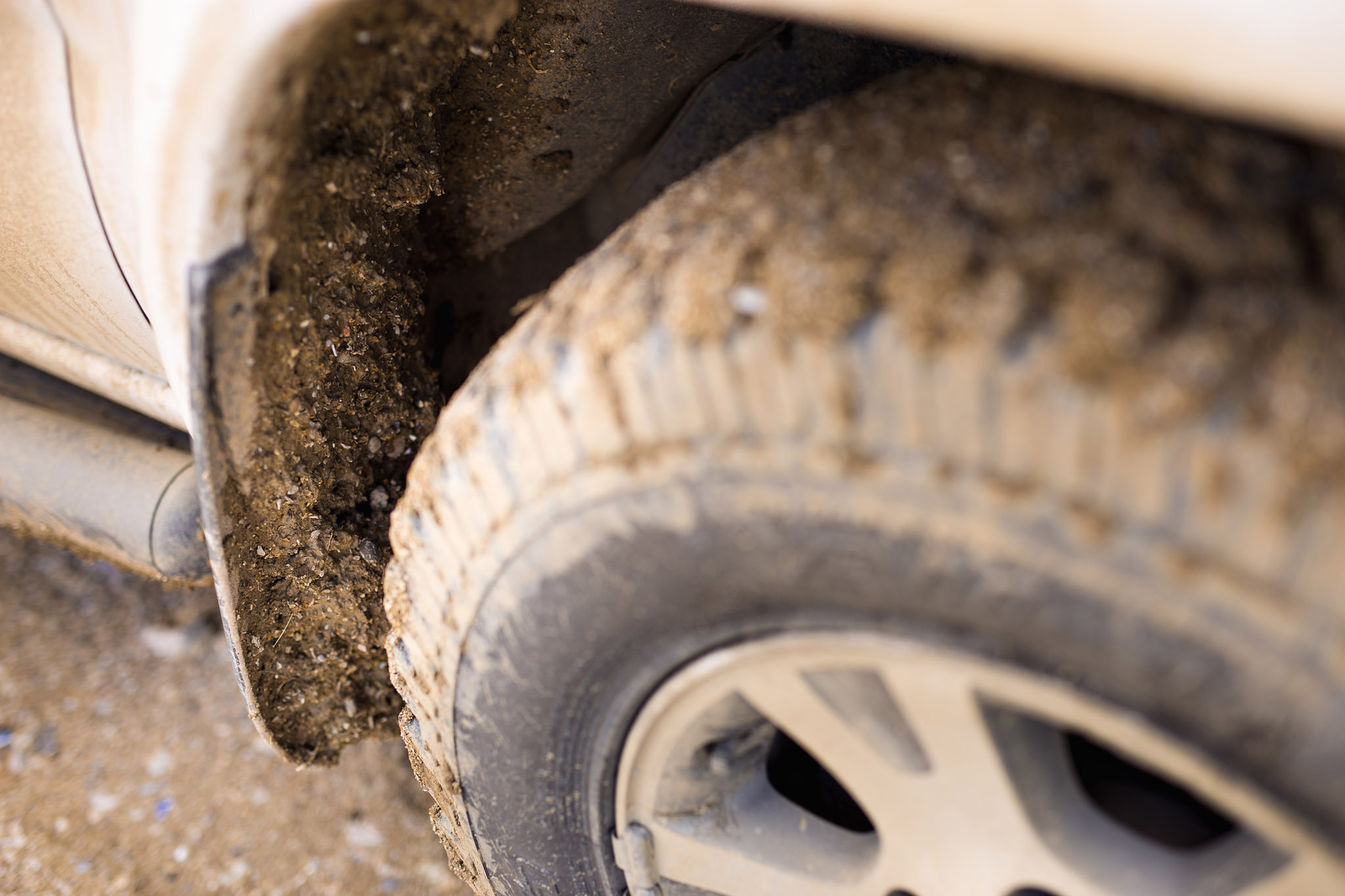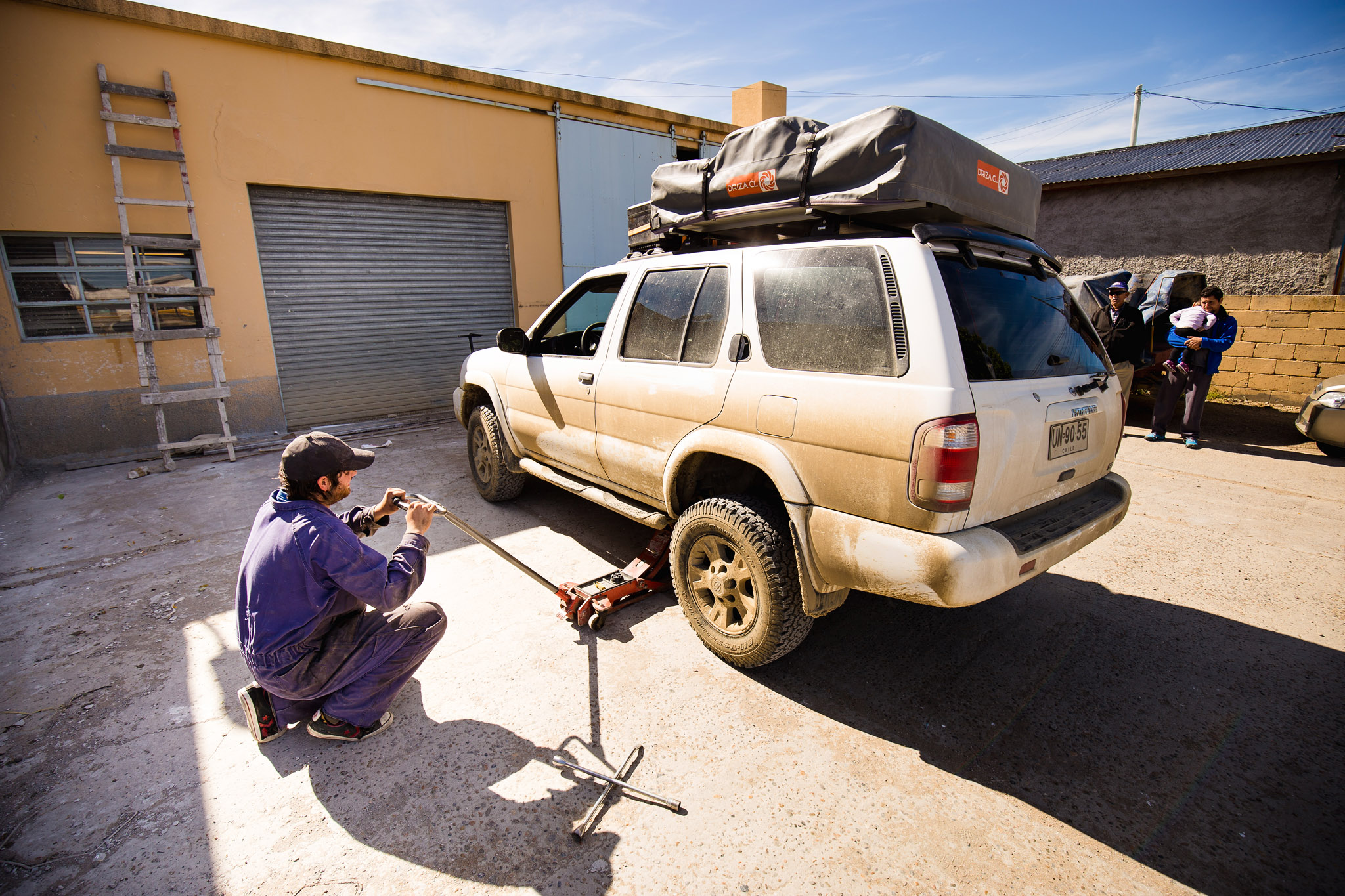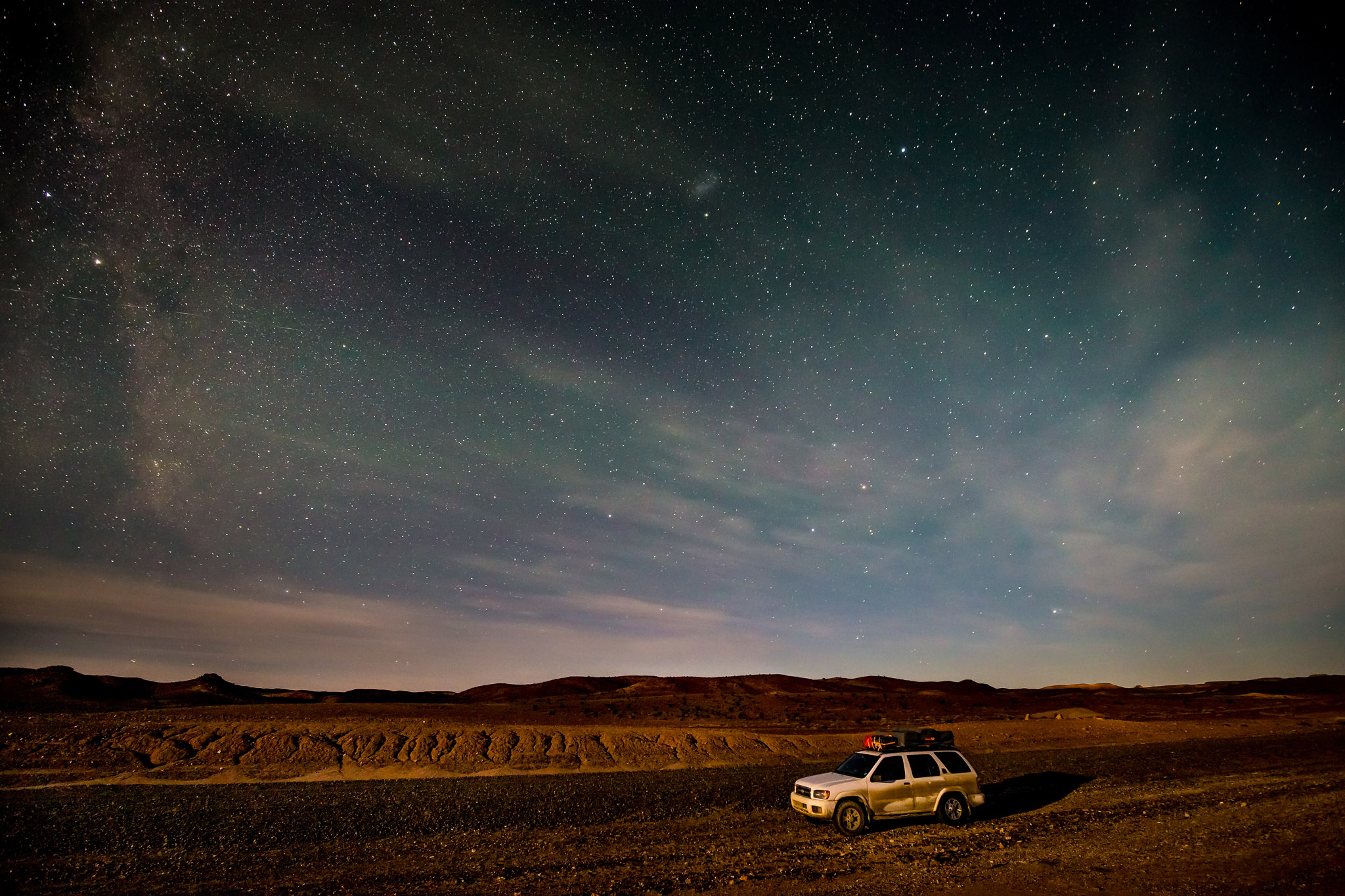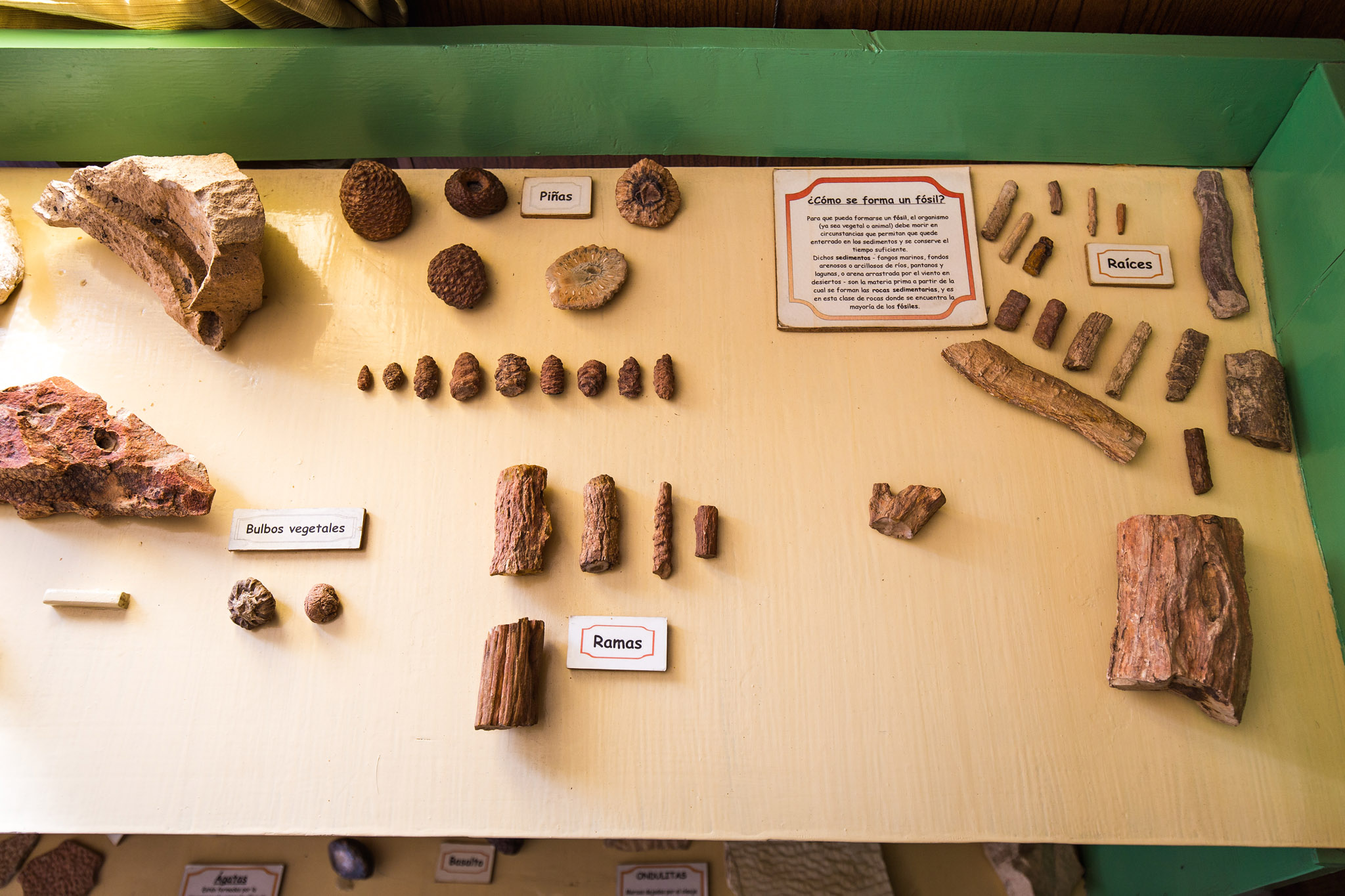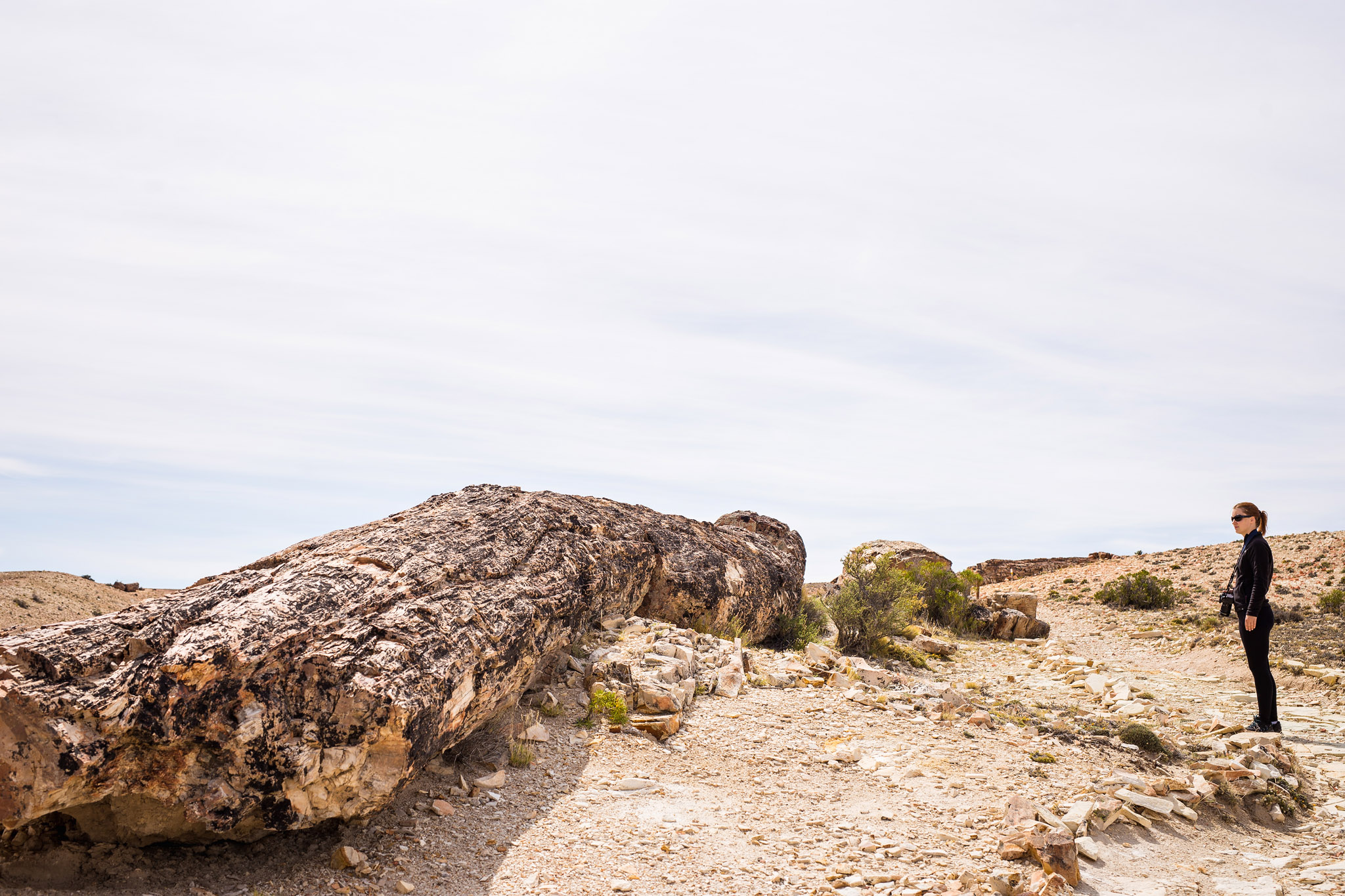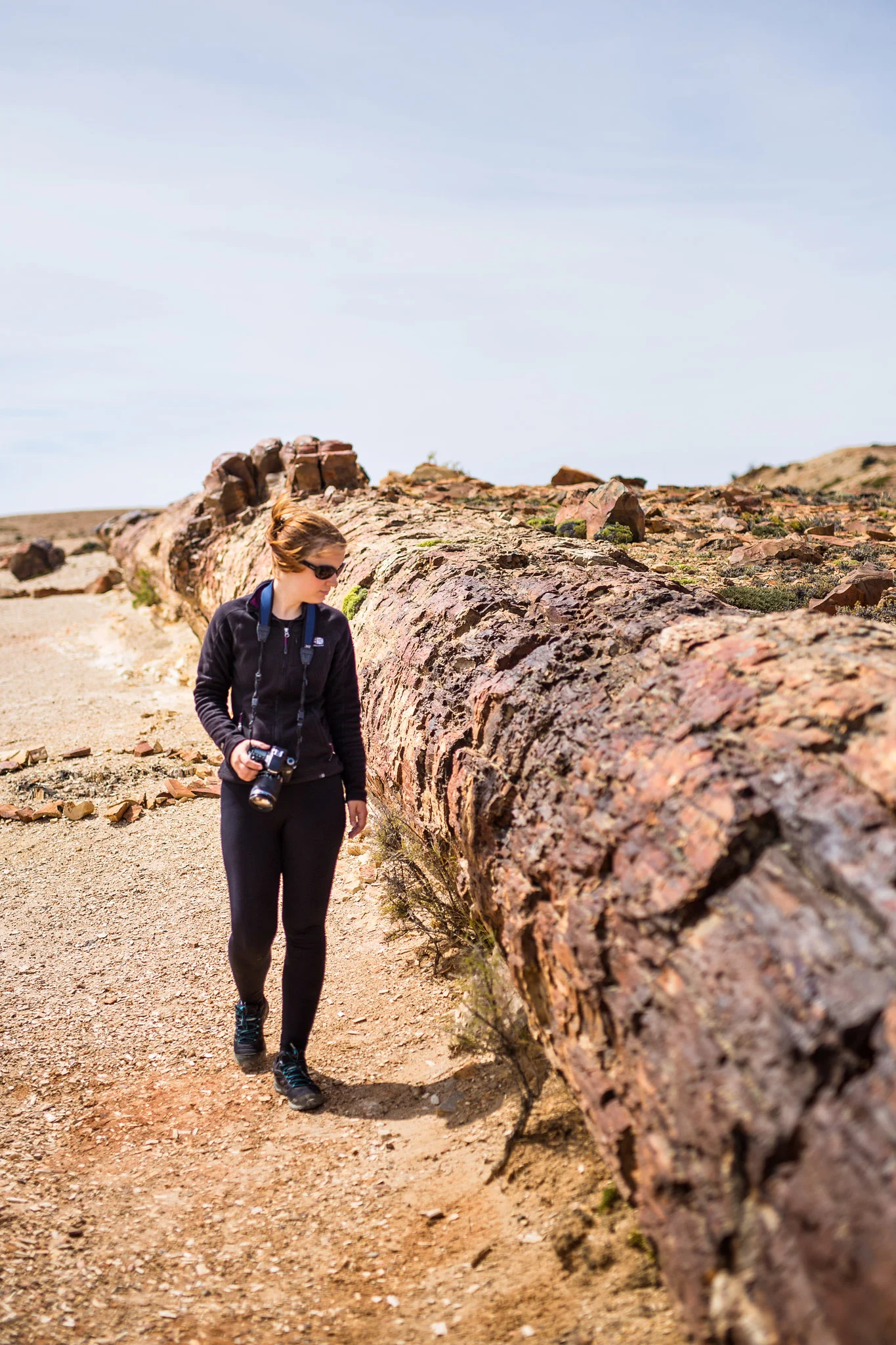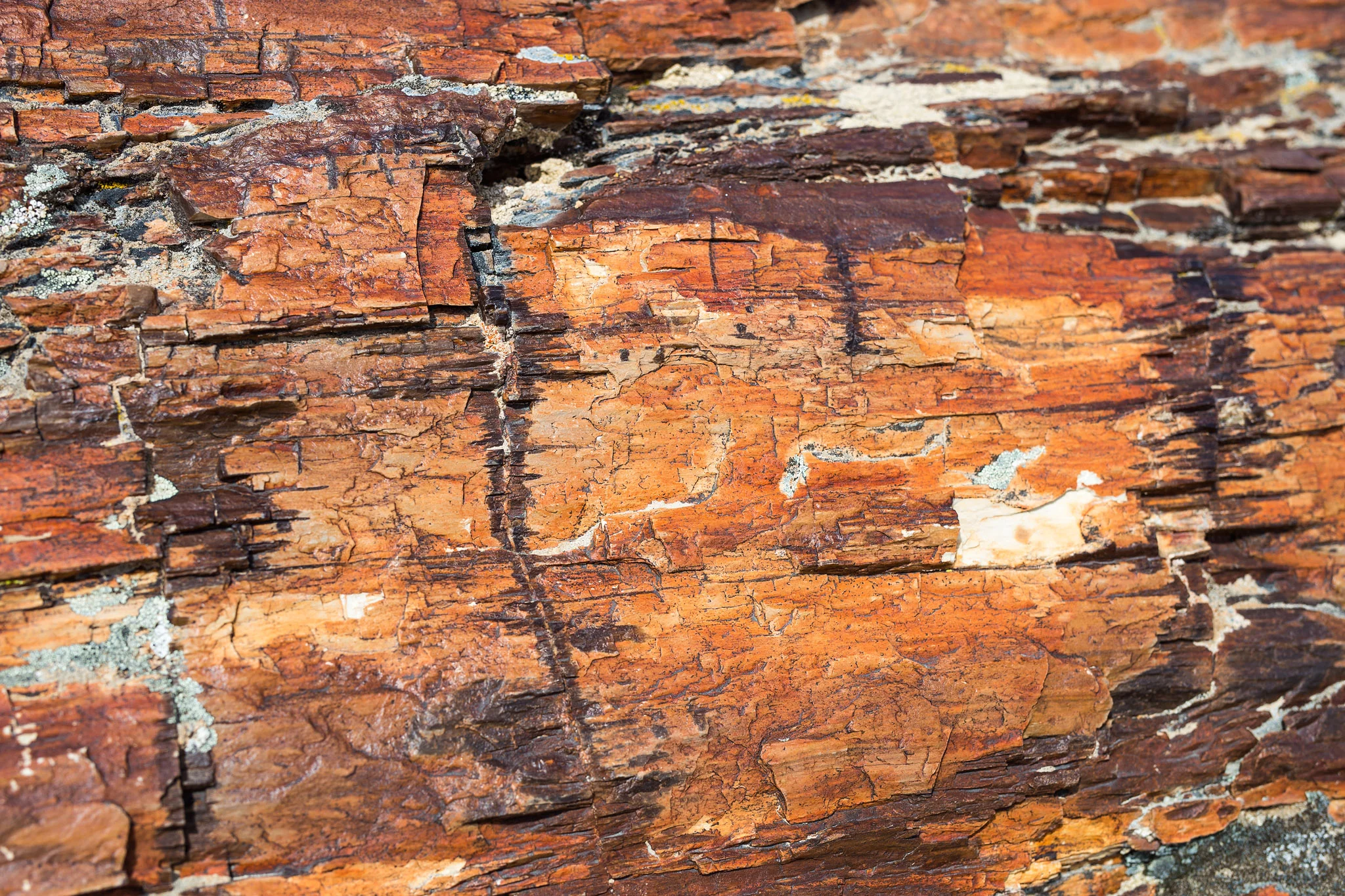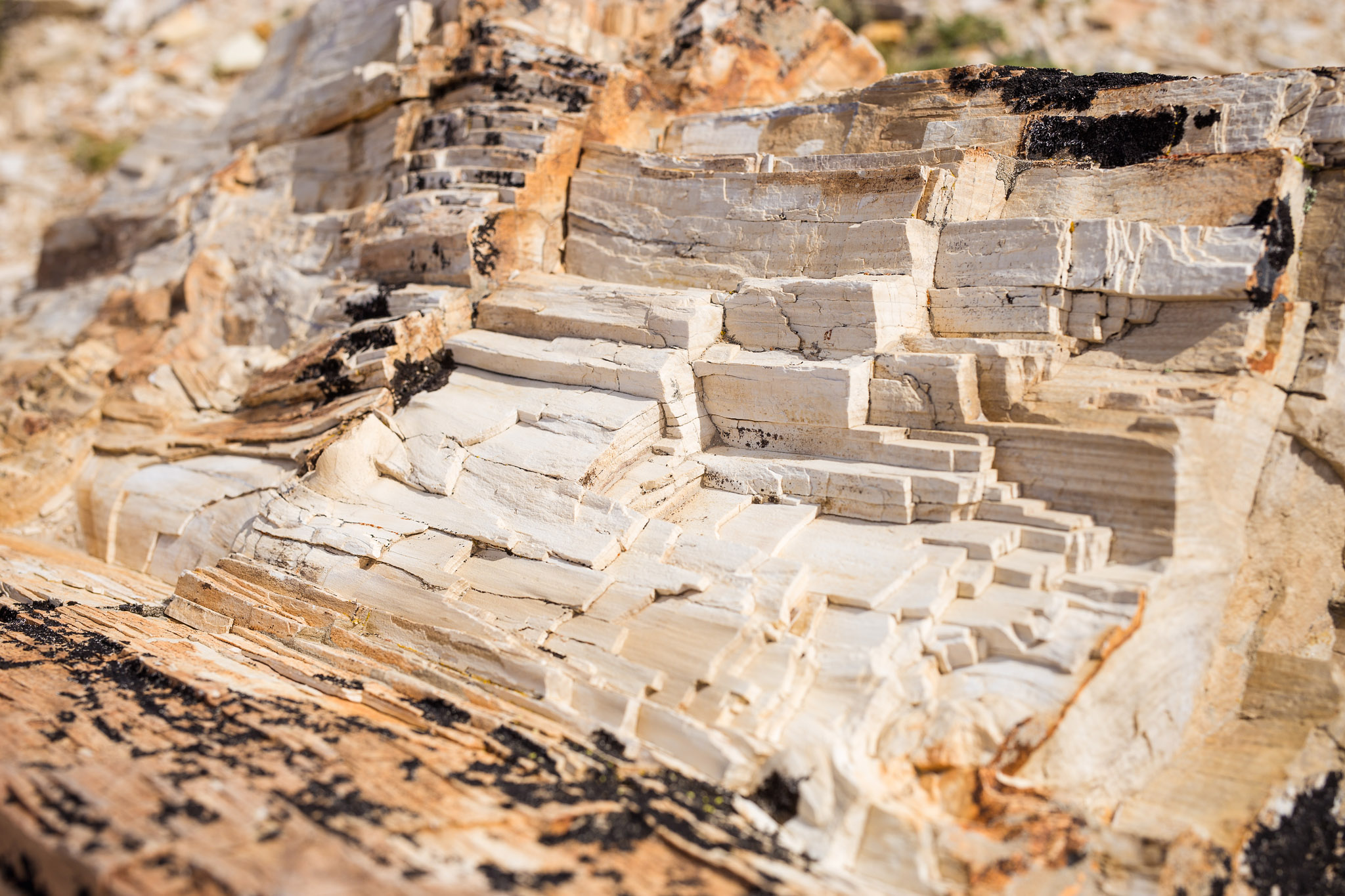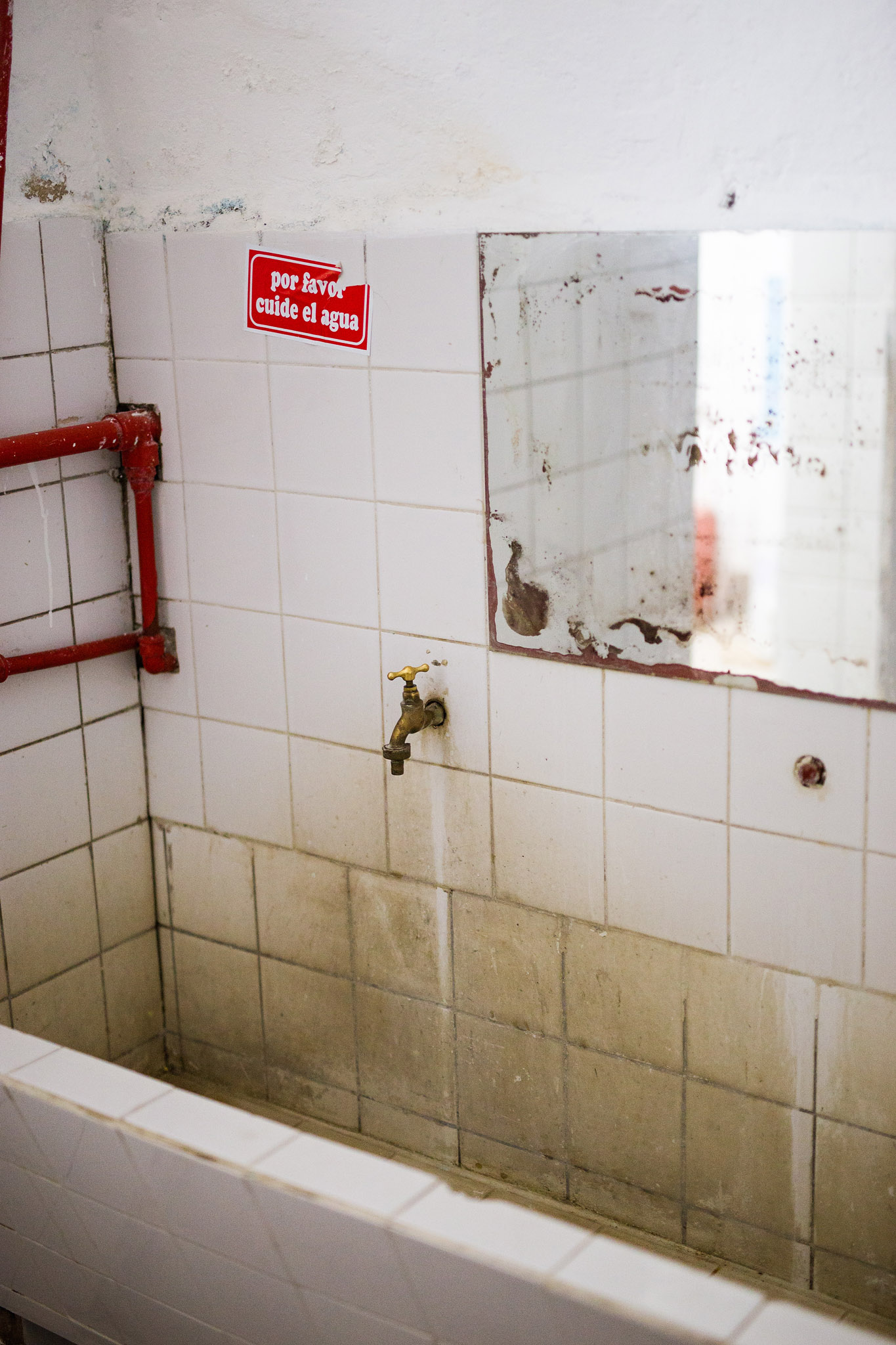[[When we were driving down to southern Argentina, we saw most of the "tourist attractions" and interesting places on the west side. Therefore, we decided to drive on the less touristy, but very quick and empty road. 3000km of long straight paved roads, almost no curves on the road... Right. But we managed to see a few interesting places on the way.///When we were driving down to southern Argentina, we saw most of the "tourist attractions" and interesting places on the west side. Therefore, we decided to drive on the less touristy, but very quick and empty road. 3000km of long straight paved roads, almost no curves on the road... Right. But we managed to see a few interesting places on the way.///Väčšinu atrakcií a ciest s krásnymi výhľadmi sme si užili v Argentíne smerom dolu po západnej časti, takže cesta hore smerom k Buenos Aires viedla menej zaujímavou, ale prázdnou a rýchlou cestou. Na ceste dlhej 3000 km sme však dokázali navštíviť pár zaujímavých miest.]]
[[Our first stop was the shore in San Julián - a small town on the coast. We went to check out the beach and thought of staying the night there, but there were many sharp looking shells... or something like that, so after some driving around and enjoying the place we left. Just outside of town, we stopped to have a lunch break on the gas station and noticed that one of our tires seemed suspiciously... underpressured. Being prepared for this, Ivan took out our portable air compressor, we aired up the tire and went to the nearest tire shop. There, after spending about 40 minutes looking for any leak, they said that either the hole "fixed" itself or there was no hole there in the first place. Just after leaving, we realized that a day before that we changed the oil and they aired our tires a bit, so maybe they scr*wed something. Nevertheless, we never got a flat tire again during the whole trip.///Our first stop was the shore in San Julián - a small town on the coast. We went to check out the beach and thought of staying the night there, but there were many sharp looking shells... or something like that, so after some driving around and enjoying the place we left. Just outside of town, we stopped to have a lunch break on the gas station and noticed that one of our tires seemed suspiciously... underpressured. Being prepared for this, Ivan took out our portable air compressor, we aired up the tire and went to the nearest tire shop. There, after spending about 40 minutes looking for any leak, they said that either the hole "fixed" itself or there was no hole there in the first place. Just after leaving, we realized that a day before that we changed the oil and they aired our tires a bit, so maybe they scr*wed something. Nevertheless, we never got a flat tire again during the whole trip.///Prvú zastávku sme si urobili na pobreží v San Julián, pláž bola plná rôznych mušličiek a sem tam sme si neboli istí, či neublížia našim pneumatikám. Pri obedovej pauze na pumpe, sme si všimli, že nám podozrivo klesla pneumatika a nejak sa tvári vyfučano. Tak sme rýchlo doplnili vzduch a išli do prvého servisu. Tam po 40 minútach neúspešného hľadania nakoniec vyhlásili, že buď diera nebola alebo sa opravila sama. My sme si zároveň uvedomili, že nám pred odchodom z Ushuaie pri výmene oleja dopúšťali vzduch do pneumatík a možno niečo... pototo.]]
Monumento Nacional Bosques Petrificados
[[Our first (more interesting) stop was Bosques Petrificados, beautiful petrified forest that we've heard a lot about before heading north. To give you the idea of how large Argentina is, that was about 1100km from Ushuaia...our first stop. We weren't sure what to expect, as we've never seen anything like similar before. We arrived late at night, but the first thing that got our attention were the mountains around, which looked like they've been cut straight in one line. We decided to spend the night in the wilderness here - good choice, because we got to see one of the most beautiful night sky we've ever seen. Being in middle of nowhere helps with that quite a lot :)///Our first (more interesting) stop was Bosques Petrificados, beautiful petrified forest that we've heard a lot about before heading north. To give you the idea of how large Argentina is, that was about 1100km from Ushuaia...our first stop. We weren't sure what to expect, as we've never seen anything like similar before. We arrived late at night, but the first thing that got our attention were the mountains around, which looked like they've been cut straight in one line. We decided to spend the night in the wilderness here - good choice, because we got to see one of the most beautiful night sky we've ever seen. Being in middle of nowhere helps with that quite a lot :)///Naša prvá zaujímavá zastávka bola v Bosques Petrificados (Skamenelé lesy), ktoré nás uchvátili viac, ako sme očakávali. Iba na znázornenie, aká obrovská je Argentína - táto prvá zastávka bola 1100km od Ushuaie... V prvom rade, sme si neboli istí, čo máme očákavať a vykúkali sme už od odbočky z hlavnej cesty. Pri prvom pohľade nás prekvapili kopce, ktoré sme videli zdiaľky a vyzerali ako keby boli všetky uťaté v rovnej línii. Trošku sme sa predchádzajúci deň zdržali a nestihli sme do parku prísť počas otváracích hodín, tak sme noc strávili ešte pred parkom s pekným západom slnka a krásnou nočnou oblohou.]]
[[The following morning, we went for a walk, but first we educated ourselves a bit at the guardpost, just to know a bit more about what we're about to look at. The petrified forest was "created" about 150 million years ago during the Jurassic period, when these parts were covered with gigantic trees - "Araucaria" (up to 100m tall and 1000 years old) and the climate was very wet and windy. Due to the many volcanoes and their eruptions, some trees that have fallen because of the fierce winds were covered by a layer of ash, so they did not decompose. That, combined with heavily mineralized water that gets into all the places in the trunks and replaces the organic tissue and then a stone mold forms in it's place. In short, magic (petrification) happens and you have trees that look like real trees but are turned into stone. :) As the time was passing, erosion uncovered the trunks that we could admire. There's also a small museum on-site, where you are allowed to touch the "wood" and reassure yourself that it's really stone that you're looking at. Touching and especially collecting the petrified wood is strictly prohibited, but the guard told us people keep taking them from the place anyway. We hoped that more people would realize that if we keep doing that, there will be no more of this beautiful patrimony for the future generations. Luckily, the place is full of giant petrified trunks that no one would be able to steal :) One more great part about this park? The entry was free. :) It's just _a bit_ out of the way.///The following morning, we went for a walk, but first we educated ourselves a bit at the guardpost, just to know a bit more about what we're about to look at. The petrified forest was "created" about 150 million years ago during the Jurassic period, when these parts were covered with gigantic trees - "Araucaria" (up to 100m tall and 1000 years old) and the climate was very wet and windy. Due to the many volcanoes and their eruptions, some trees that have fallen because of the fierce winds were covered by a layer of ash, so they did not decompose. That, combined with heavily mineralized water that gets into all the places in the trunks and replaces the organic tissue and then a stone mold forms in it's place. In short, magic (petrification) happens and you have trees that look like real trees but are turned into stone. :) As the time was passing, erosion uncovered the trunks that we could admire. There's also a small museum on-site, where you are allowed to touch the "wood" and reassure yourself that it's really stone that you're looking at. Touching and especially collecting the petrified wood is strictly prohibited, but the guard told us people keep taking them from the place anyway. We hoped that more people would realize that if we keep doing that, there will be no more of this beautiful patrimony for the future generations. Luckily, the place is full of giant petrified trunks that no one would be able to steal :) One more great part about this park? The entry was free. :) It's just _a bit_ out of the way.///Ráno sme sa vydali na prechádzku, ale najprv sme sa rozhodli trošku povzdelávať u strážca parku, nech vieme, na čo sa vlastne máme pozerať a čo máme hľadať (nakoniec to bolo vcelku jasné :D). Skamenelé lesy vznikli pred 150 miliónmi rokmi v jurskom období, keď pre túto oblasť bola príznačná vlhká klíma s gigantickými stromami (“araucarias” or “pehuenes”) (až do 100 metrov vysoké a 1000 rokov staré). Pre toto obdobie bola príznačná silná vulkanická činnosť a silné vetry, ktoré polámali a zničili gigantické stromy, ktoré boli neskôr pokryté popolom z neďalkej sopky. Postupom času sa začal pomalý a zdĺhavý proces skamenenia (fosilizácie), keď dažďová voda prechádzala cez popol a obohatená o minerály prenikla do vnútra stromov a vyplnila prázdne miestečka v pochovaných stromoch a skryštalizovala. Tento proces sa nazýva “Silicification or petrification”. Ako čas plynul, erózie odokryli stromy, ktoré sme mohli navštíviť a hlbšie sa nachádzajú ešte staršie. Klíma sa rapídne zmenila a dnes je tam sucho a počas dňa veľmi horúco, preto sme boli radi, že sme sa na prechádzku vybrali ešte doobeda. V maličkom múzeu nájdete okrem popisu procesu aj pár exemplárov, ktoré si môžete “ošahať” a overiť si, že to drevo, na ktoré sa pozeráte, je naozaj kameň. Zbieranie a vôbec dotýkanie sa skamenelín je prísne zakázané, avšak strážca parku povedal, že aj napriek zákazu, si ľudia domov odnášajú nelegálne suveníry. Bohužiaľ, nie všetci ľudia dokážu pochopiť, že ak chceme niečo zanechať aj pre budúce generácie, nemôžeme byť sebeckí a odnášať si skameneliny z parku. Našťastie je národný park veľký a plný obrovských kusov, ktoré len tak niekto neodnesie :). Čerešnička na torte: vstup do tohto úžasného parku bol zadarmo, akurát je trošku mimo všetkého naokolo.]]
Cabo de dos Bahías
[[Well, we decided to spend the New Year with penguins, that Janka wanted to see in person :) Our friend José from Ushuaia recommended us to see the Cabo de Dos Bahías reserve next to the town of Camarones. There, you can find a colony of almost 20 000 Magellanic penguins, that live here from September till May. Not the worst place to be for the beginning of the new year in South America :)///Well, we decided to spend the New Year with penguins, that Janka wanted to see in person :) Our friend José from Ushuaia recommended us to see the Cabo de Dos Bahías reserve next to the town of Camarones. There, you can find a colony of almost 20 000 Magellanic penguins, that live here from September till May. Not the worst place to be for the beginning of the new year in South America :)///Nový Rok sme sa rozhodli stráviť s tučniakmi, ktorých som túžila vidieť naživo. Náš kamarát José z Ushuaie nám odporučil navštíviť rezervu Cabo de Dos Bahías pri meste Camarones. Nachádza sa tu kolónia takmer 20 000 tučniakov magellanských, ktorí tu žijú od septembra do mája. Kúsok severnejšie sa nachádza ďalšia rezerva s tučniakmi Punta Tombo, ktorá je však turistickejšia a vstup už nie je zdarma.]]
[[The only place with shower we found nearby and we really wanted to see those penguins... I don't remember if I was brave enough to try one of these.///The only place with shower we found nearby and we really wanted to see those penguins... I don't remember if I was brave enough to try one of these.///Jediné miesto so sprchou a ja som vážne chcela na Nový rok nesmrdieť a vidieť tučniaky a toto bola jediná možnosť... Túto pánsku sprchu myslím Ivan radšej nepoužil...]]
[[I mentioned that I wanted to see penguins, right? Apart from them, there are other animals to see around here - ñandú (bird similar to ostrich or emu) and guanaco (wild type of llama).///I mentioned that I wanted to see penguins, right? Apart from them, there are other animals to see around here - ñandú (bird similar to ostrich or emu) and guanaco (wild type of llama).///Spomínala som, že som chcela vidieť tučniaky, však? Okrem tučniakov magallenských sa tu dajú zahliadnuť ñandú (vták podobný pštrosovi alebo emu) a guanaco (druh divoko žijúcej lamy)]]
[[I think I don't even have to say that I've seen a lot of the penguins and that I was leaving more than satisfied. :)///I think I don't even have to say that I've seen a lot of the penguins and that I was leaving more than satisfied. :)///Myslim, že nemusím dodávať, že som tučniakov videla dostatočne veľa a odchádzala som veľmi spokojná :)]]




